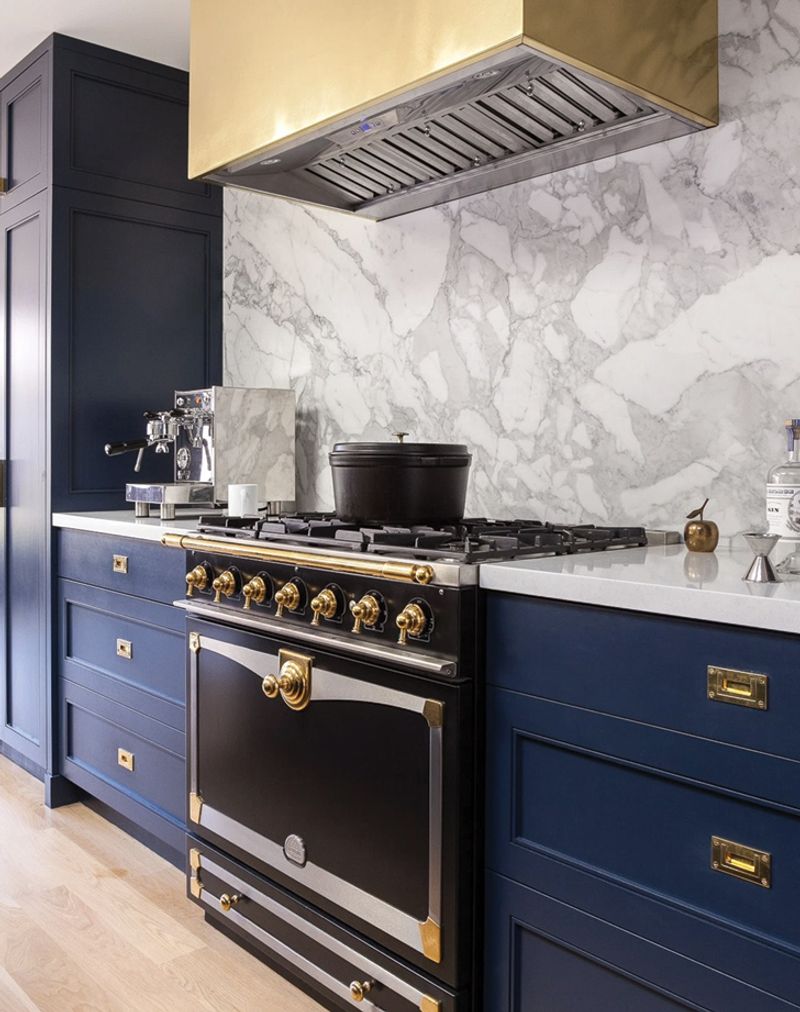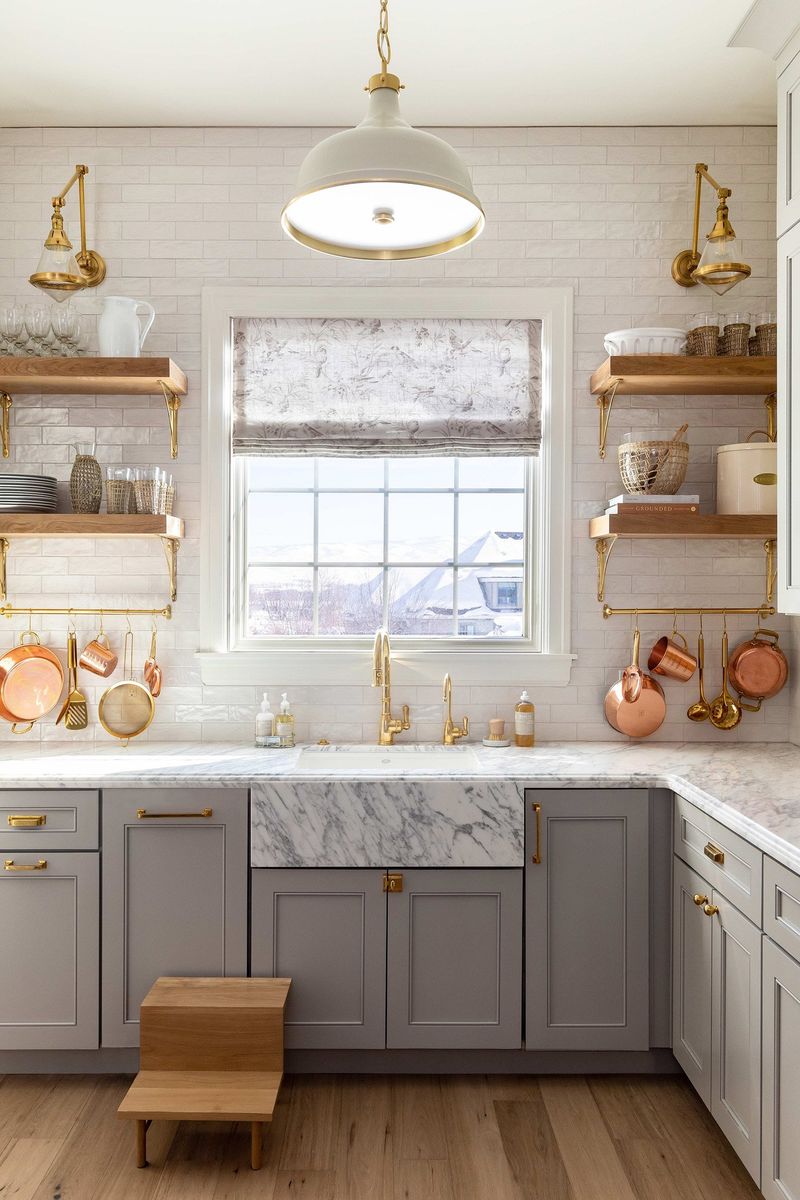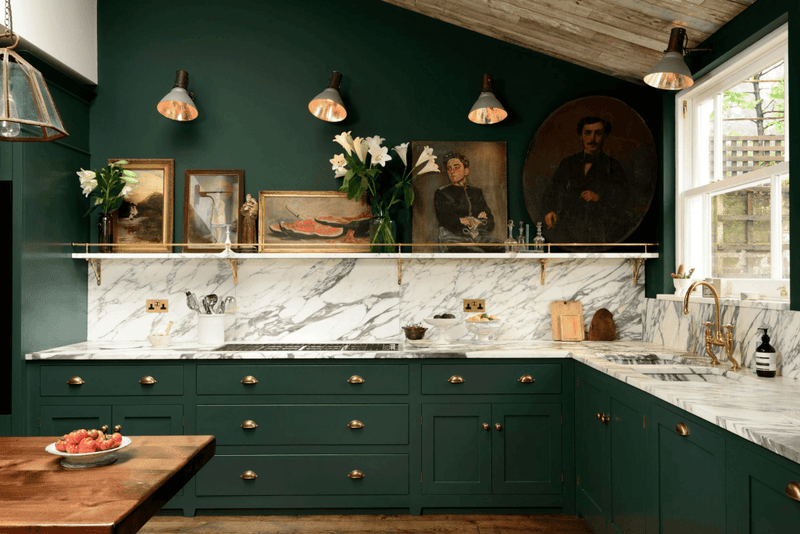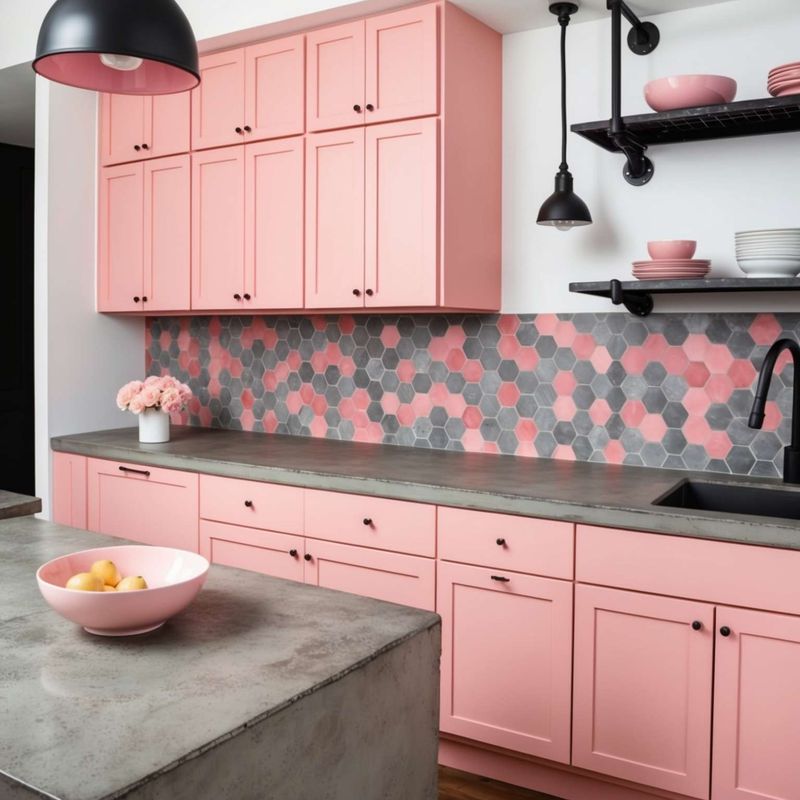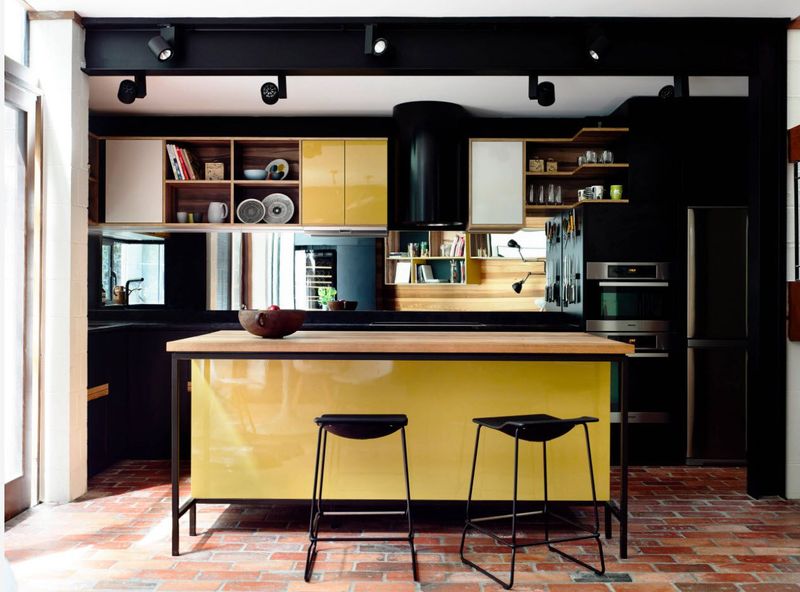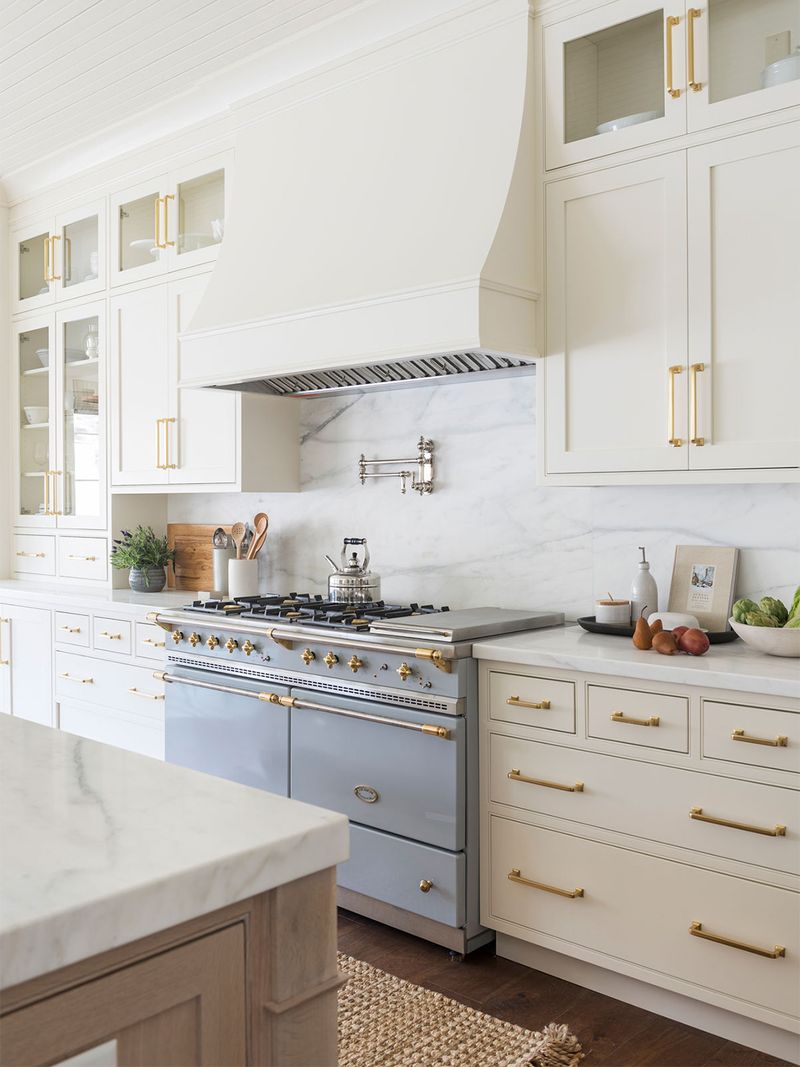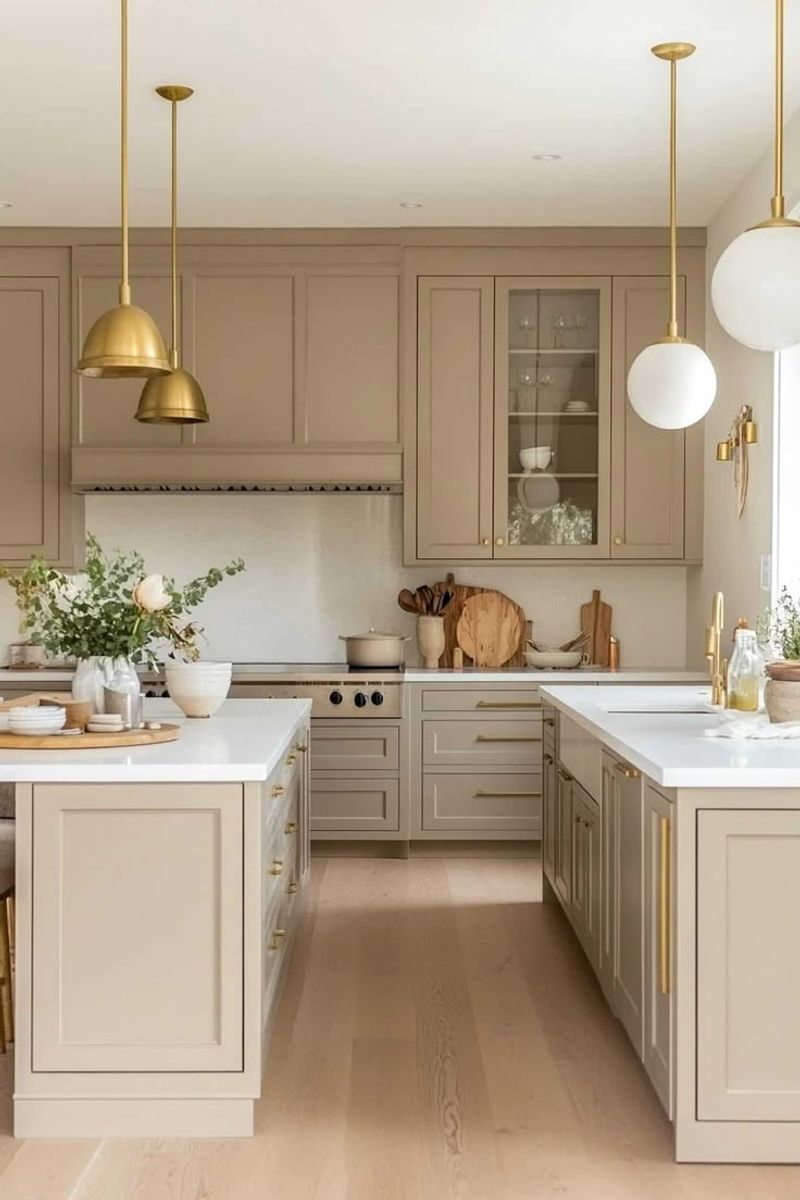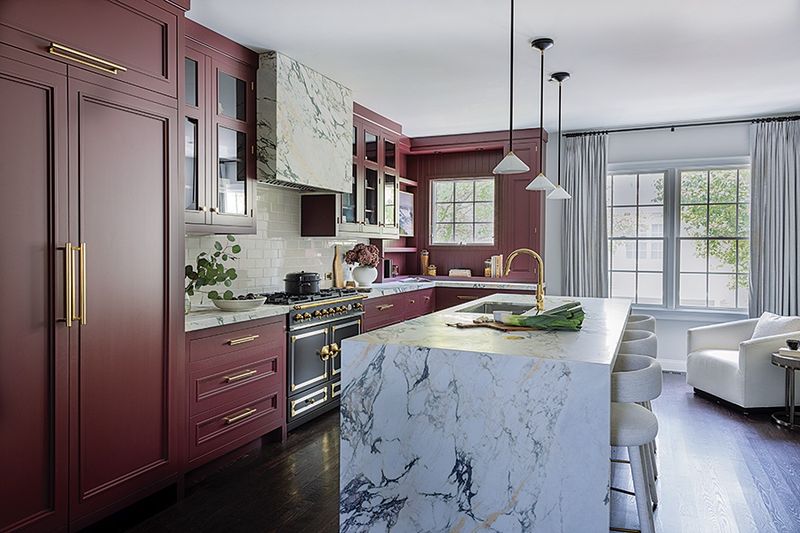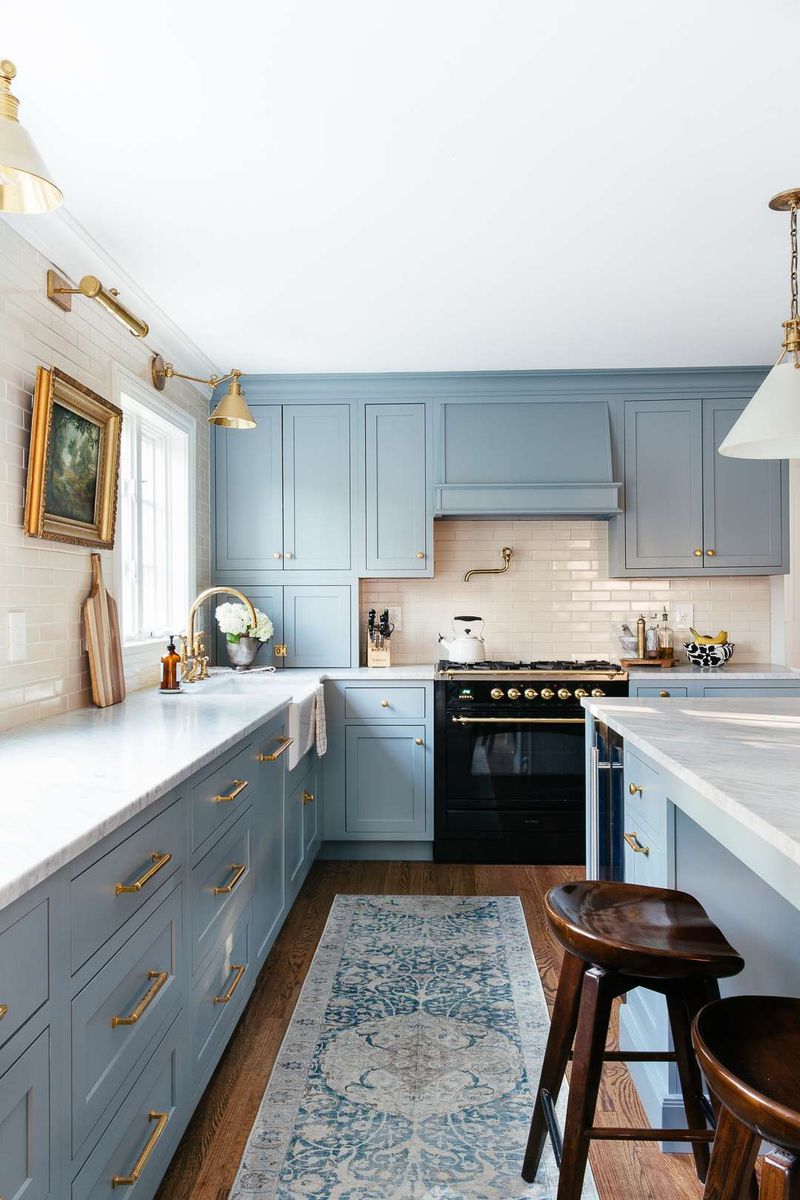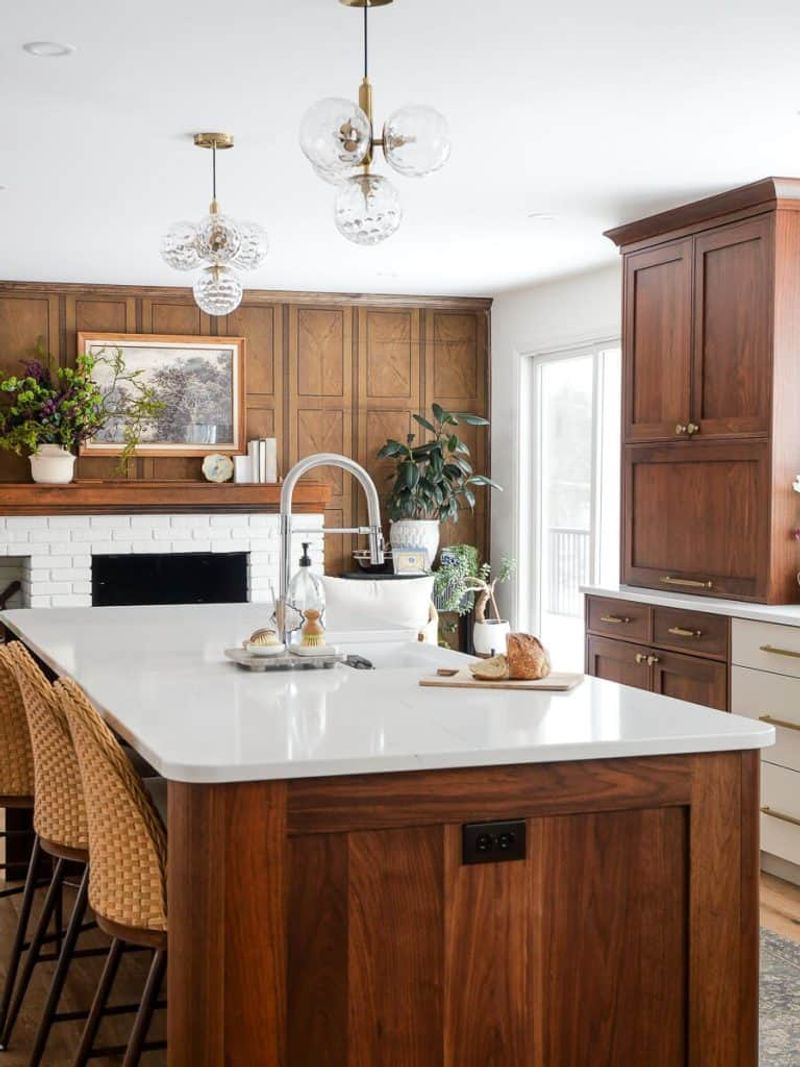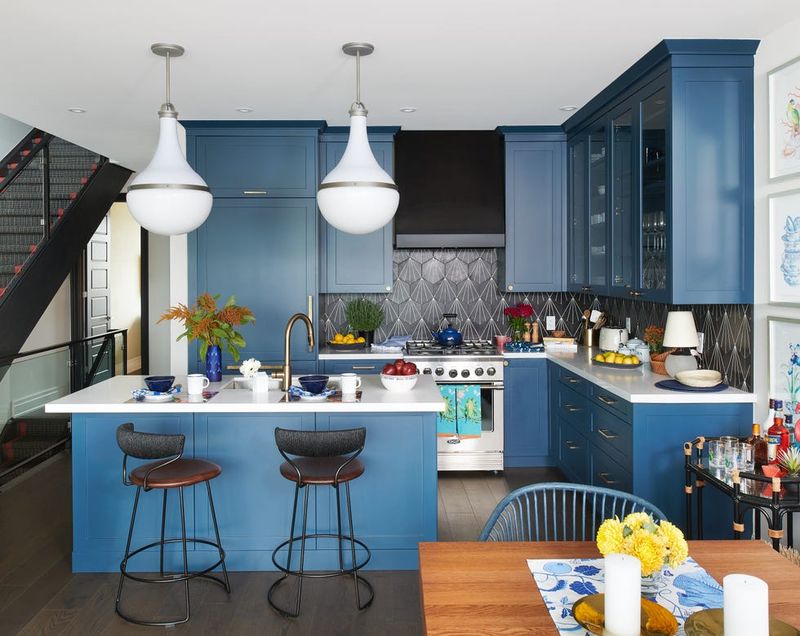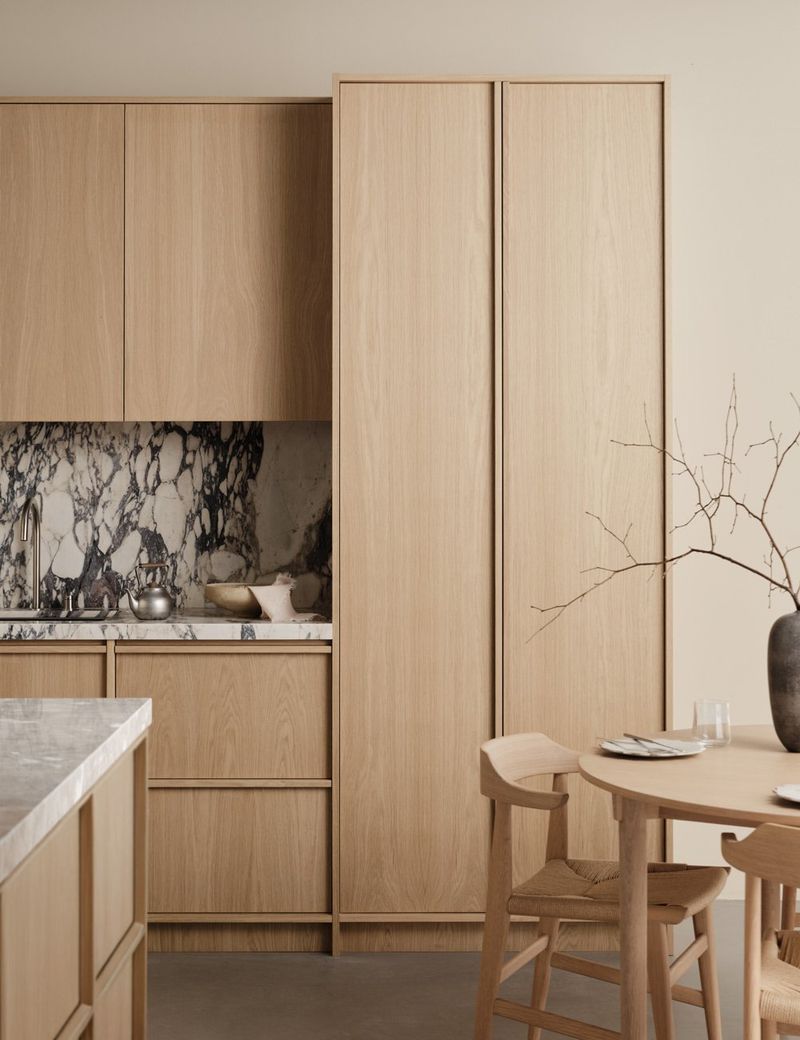Choosing the right cabinet color can completely transform your kitchen – yet it’s often one of the hardest decisions to make.
The good news? Designers have seen it all and know which hues truly shine in this hardworking space. Some choices feel timeless, others add a bold twist, and a few might just surprise you.
Ready for a little inspiration? Here are 10 designer-approved kitchen cabinet color ideas, plus 6 extra picks that could completely change the way you see your kitchen.
1. Classic White Cabinets
Nothing beats the timeless appeal of white cabinets in a kitchen. They reflect light beautifully, making even the tiniest cooking spaces feel airy and expansive.
White cabinets also provide a blank canvas that works with virtually any countertop material, backsplash design, or flooring option. For a touch of dimension, consider shaker-style doors with subtle hardware that won’t compete with the clean aesthetic.
2. Navy Blue Elegance
Sailing into kitchens everywhere, navy blue cabinets bring sophistication without the heaviness of black. This rich hue creates a stunning backdrop for brass or gold hardware that pops against the deep color.
When paired with light countertops and walls, navy creates a balanced look that’s both bold and livable. Many designers consider navy a new neutral that stands the test of time while still offering personality.
3. Dramatic Black Cabinets
For the bold at heart, black cabinets make a striking statement that anchors the kitchen with undeniable drama. Contrary to popular belief, dark cabinets can work in spaces of all sizes when balanced with proper lighting.
The key to success lies in contrast—pair black cabinets with light countertops, reflective backsplashes, and adequate lighting. Matte black finishes offer a sophisticated, fingerprint-resistant option, while glossy finishes reflect light and add dimension.
4. Warm Gray Neutrals
Somewhere between beige and gray lies the perfect warm gray—a chameleon-like neutral that adapts to any design style. These sophisticated hues provide more depth than white without the commitment of a bold color.
Warm grays play nicely with both cool and warm accents, making them incredibly versatile. They create a soft backdrop that allows other elements like unique backsplashes or statement lighting to shine while maintaining a cohesive, designer-approved aesthetic.
5. Two-Tone Cabinet Combinations
Why choose just one color when you can have two? Designers love pairing contrasting cabinet colors to create visual interest and define zones within the kitchen.
A popular approach features darker base cabinets grounding the space with lighter upper cabinets to maintain airiness overhead. Another winning combination places a statement island in a bold hue while surrounding perimeter cabinets remain neutral, creating a focal point without overwhelming the room.
6. Emerald Green Jewel Tones
Jewel-toned kitchens sparkle with personality, and emerald green cabinets lead the pack in creating spaces that feel both luxurious and lively. This rich color brings energy while maintaining sophistication.
Designers often pair emerald with brass accents and marble countertops for a timeless yet trendy combination. The deep green works surprisingly well as a neutral base, complementing most color schemes while adding depth and character that boring beiges could never achieve.
7. Soft Blush Pink
Unexpected yet increasingly popular, blush pink cabinets offer a subtle way to incorporate color without overwhelming the space. When done in muted tones, pink reads almost as a neutral with warm undertones.
The secret to pulling off pink cabinets lies in the surrounding elements—pair with matte black hardware for edge, or gold for glamour. Concrete countertops balance the softness with industrial texture, creating a kitchen that feels both fresh and grounded.
8. Sunny Yellow Accents
A splash of sunshine might be just what your kitchen needs! Yellow cabinets bring instant cheer to cooking spaces, creating an environment that energizes and uplifts.
Rather than committing to all-yellow cabinetry, designers often recommend using this vibrant hue as an accent—perhaps on a kitchen island or a small section of cabinets. Muted, buttery yellows offer sophistication, while brighter tones create playful, retro vibes when paired with white countertops.
9. Creamy Off-White
When stark white feels too clinical, creamy off-white cabinets offer warmth while maintaining a light, airy feel. These subtle hues range from barely-there ivory to rich buttercream, each bringing different energy to the space.
Off-white works beautifully in traditional and transitional kitchens, especially when paired with classic elements like subway tile or marble countertops. The softness of cream cabinets creates an inviting atmosphere that pure white sometimes lacks, making the kitchen feel lived-in from day one.
10. Soft Taupe Neutrals
Quietly sophisticated, taupe cabinets bridge the gap between gray and beige, creating a versatile neutral that works with virtually any design style. This chameleon-like color shifts subtly with changing light, revealing complex undertones throughout the day.
Perfect for those who find gray too cool and beige too yellow, taupe offers the best of both worlds. Designers appreciate how these cabinets create a soft backdrop that allows architectural details and statement pieces to stand out while maintaining an elegant foundation.
1. Dramatic Burgundy Red
Making a bold statement without shouting, burgundy cabinets bring sophisticated drama to the kitchen. This deep, wine-inspired hue feels both classic and unexpected, offering richness without the brightness of primary red.
Designers often treat burgundy as a neutral base, pairing it with marble countertops and brass accents for timeless elegance. The color works particularly well in spaces with good natural light, where its complex undertones can truly shine throughout the day.
2. Peaceful Powder Blue
Evoking clear skies and calm waters, powder blue cabinets create a serene atmosphere that’s perfect for hectic households. This soft color brings subtle personality without overwhelming the space.
Unlike its bolder cousin navy, powder blue pairs easily with various woods and metals. Designers often combine these cabinets with warm brass hardware and natural stone countertops for a balanced look. The result is a kitchen that feels both fresh and timeless—trendy without being tied to a specific decade.
3. Sage Green Serenity
Bringing the outdoors in, sage green cabinets create a calming atmosphere that connects with nature. This versatile color works beautifully in both traditional farmhouse settings and contemporary spaces.
For a cohesive look, designers often pair sage with natural wood elements, white countertops, and plants. The subtle green undertones feel fresh without overwhelming the space, making it a perfect choice for those wanting color without commitment to something too bold.
4. Mixed Wood Tones
Breaking free from matching sets, kitchens featuring multiple wood tones create rich, collected spaces that feel curated rather than purchased. This approach might combine oak uppers with walnut lowers or introduce a cherry wood island among maple perimeter cabinets.
The secret to success lies in intentional contrast—woods should be different enough to look purposeful rather than mismatched. Designers recommend maintaining similar undertones (warm with warm, cool with cool) while varying the actual colors for a harmonious yet interesting result.
5. Vibrant Cobalt Blue
For those willing to make a bold statement, cobalt blue cabinets deliver unforgettable impact. This electric hue energizes the kitchen while still feeling surprisingly livable for everyday use.
Unlike its more reserved cousin navy, cobalt demands attention and works best when allowed to be the star. Designers typically balance these vibrant cabinets with neutral countertops and simple backsplashes. The result is a kitchen that expresses personality while maintaining design harmony.
6. Rustic Light Oak
Channeling Scandinavian simplicity, light oak cabinets bring natural warmth without the heaviness of darker woods. This blonde timber creates a bright, organic foundation that works in both modern and rustic settings.
The beauty of light oak lies in its versatility—it pairs equally well with crisp white walls for a contemporary look or with colorful accents for an eclectic vibe. Many designers appreciate how these cabinets showcase the wood’s natural grain while reflecting light to make spaces feel larger.



